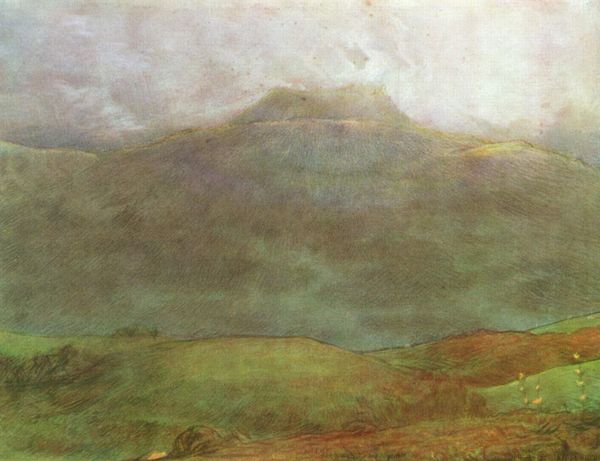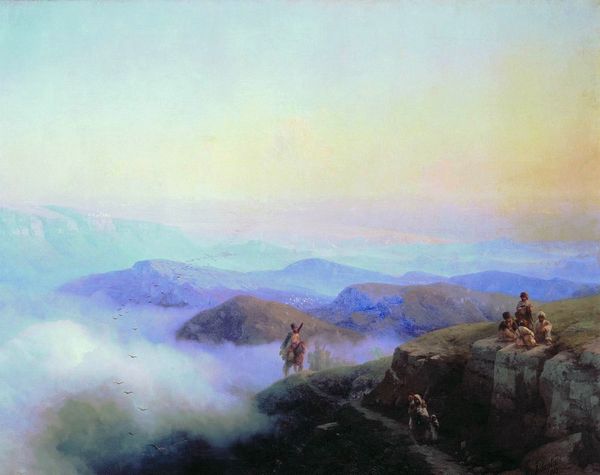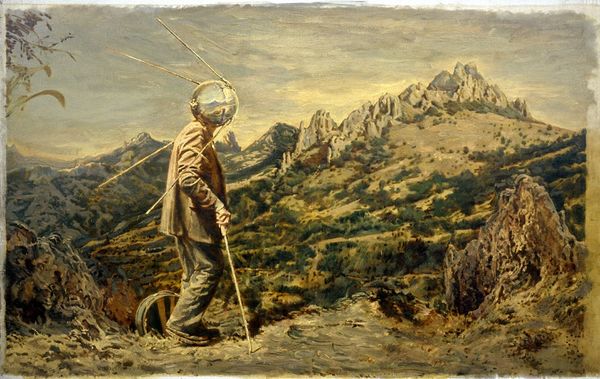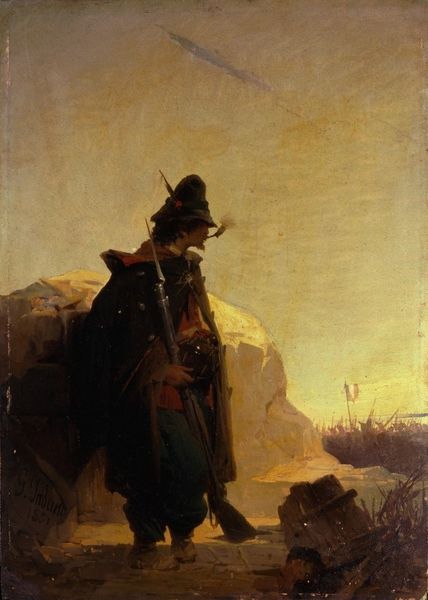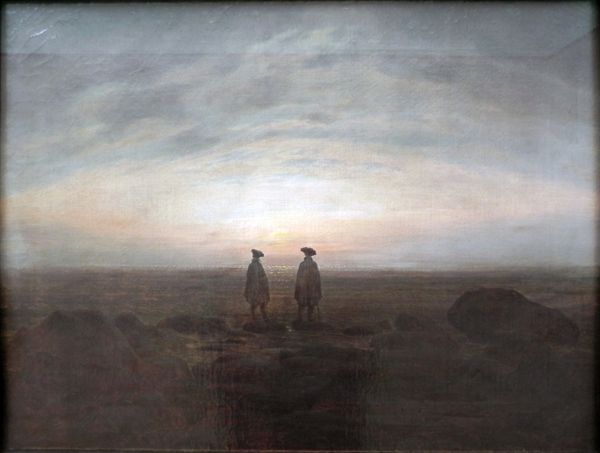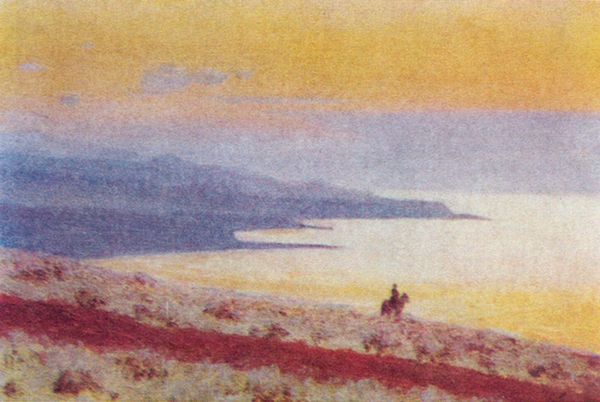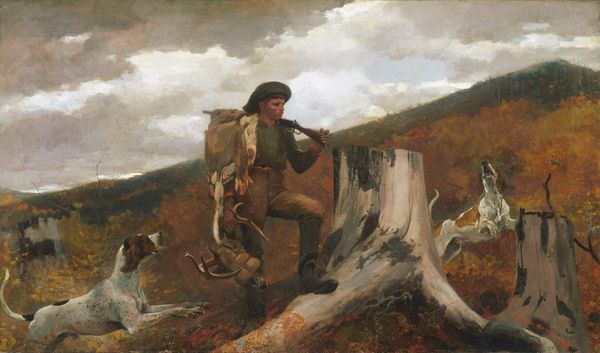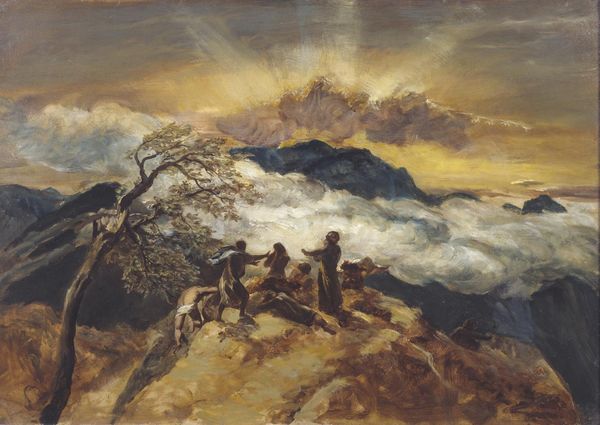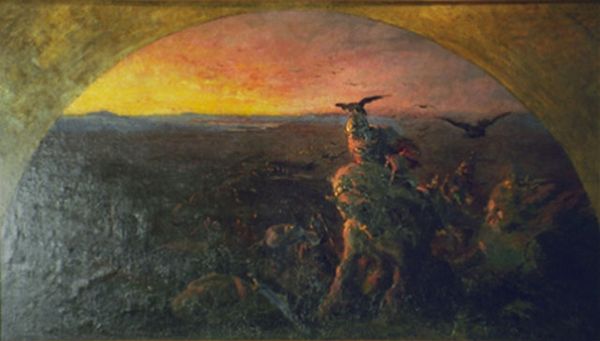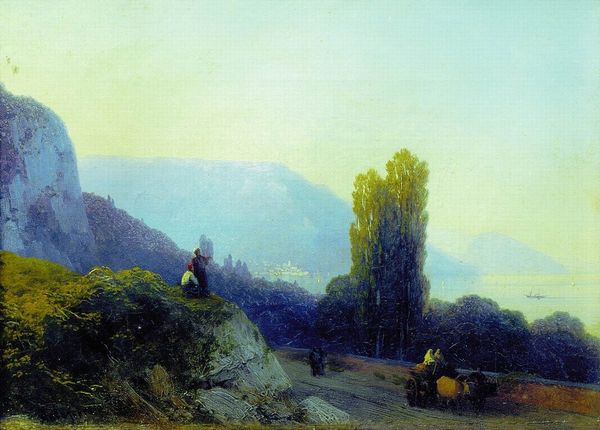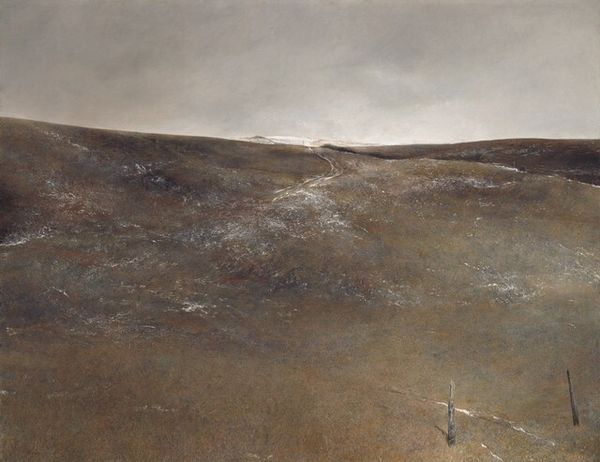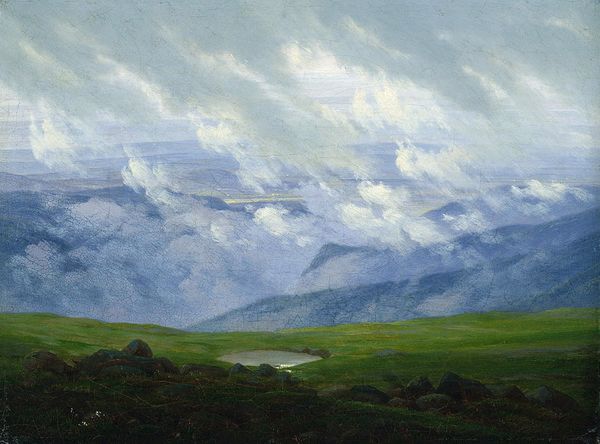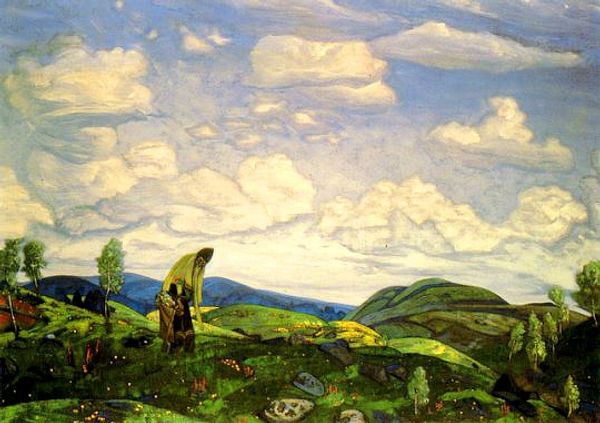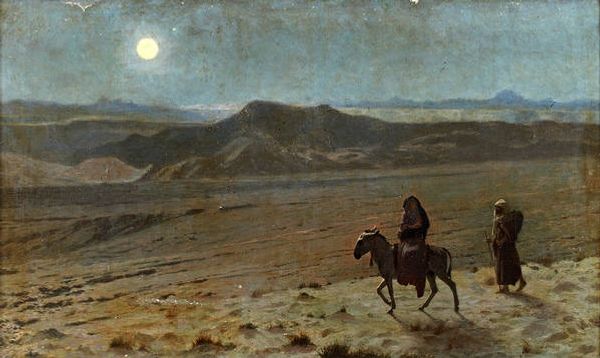
Copyright: Public domain
Editor: Here we have Theodor Kittelsen's "Soria Moria Slott," an oil painting from 1911. There's such a striking use of light. What’s most remarkable to you about the means and social context used to make this artwork? Curator: Look closely at the facture of the oil paint. Kittelsen lays it on thinly, allowing the texture of the support – likely canvas or board – to subtly influence the final image. He manipulates a limited palette of mostly cool tones – greys and purples – creating a sense of vastness, which itself would have been bought, made, sold, consumed. Editor: The texture seems almost intentionally understated. I also notice the lone figure; do you think this piece has some social message given the romantic elements? Curator: That’s interesting; in what ways would you characterize the piece’s "romantic elements," and how might this relate to Kittelsen's own engagement with Norwegian folklore and nationhood? It’s vital to examine Kittelsen’s artistic production and its connection to emerging markets for art tied to nationalist projects in Norway. Did the materials available limit the possibilities of subject matters in Norwegian artworks at the time? Editor: I suppose when you mention folklore, I begin thinking about its transmission from an oral to increasingly print-based culture in Kittelsen's time, given also his work in illustration. I didn’t really think about it that way before! Curator: Exactly! This piece underscores how shifts in media – from spoken tales to painted illustration – reflect and reshape cultural identity through newly manufactured paintings and consumer products. What did we learn about materials used? What part did available natural materials play at the time? Editor: The material constraints probably forced him to become innovative, I'd venture to guess. Curator: And maybe those limits opened opportunities he could never predict at the time?
Comments
No comments
Be the first to comment and join the conversation on the ultimate creative platform.
